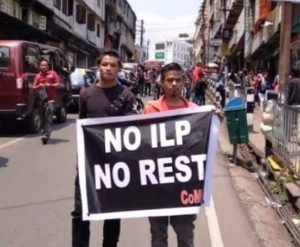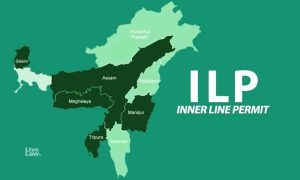Centre Not Opposed to ILP Implementation in Meghalaya: Minister Paul Lyngdoh
Meghalaya’s Tourism Minister, Paul Lyngdoh, has stated that the central government does not oppose the implementation of the Inner Line Permit (ILP) in the state. He emphasized that ILP would not hinder tourist inflow into Meghalaya.
ILP’s Impact on Tourism: Insights from Israel
Addressing widespread concerns about the potential impact of implementing the Inner Line Permit (ILP) on Meghalaya’s thriving tourism sector, Tourism Minister Paul Lyngdoh drew a compelling comparison with Israel — a country that has managed to sustain a booming tourism industry despite strict entry regulations. He pointed out that Israel, which imposes stringent visa protocols and rigorous security checks on foreign visitors, still ranks among the top countries in terms of global tourism revenue.
According to Lyngdoh, Israel’s policies are far more restrictive than the ILP currently in force in some northeastern Indian states, including Arunachal Pradesh, Mizoram, and Nagaland. Yet, tourists continue to visit Israel in large numbers, drawn by its unique cultural and historical appeal. This example, he argued, demonstrates that a well-managed permit system like ILP does not necessarily discourage tourism. Instead, if executed properly, it can coexist with — and even support — a responsible tourism model that respects local laws, preserves indigenous cultures, and ensures security without compromising on visitor experiences.
State’s Pursuit of ILP Implementation
The Meghalaya Legislative Assembly passed a resolution on December 19, 2019, urging the central government to implement ILP in the state. The state government has been consistently following up with the Union Home Ministry on this matter and awaits a response.
Opposition Criticizes Delay in ILP Approval
Ronnie V. Lyngdoh, leader of the Congress Legislative Party, criticized the central government for the prolonged delay in approving ILP for Meghalaya. He highlighted the genuine fears of the indigenous population regarding demographic changes and stressed the importance of addressing these concerns promptly.
Public Sentiment and Government’s Stance
While some political leaders continue to express growing frustration over the central government’s delay in granting ILP status to Meghalaya, Health Minister A.L. Hek offered a more tempered perspective. According to him, there is no visible restlessness or widespread agitation among the general public on the issue at present. He believes that the people of Meghalaya are patient and trust that the government is actively pursuing the matter through appropriate channels.
Hek further stressed the significance of empowering and strengthening traditional institutions, particularly the Dorbar Shnong — the grassroots village-level governing bodies that have historically played a key role in community administration. He argued that these institutions are well-positioned to manage and regulate the influx of outsiders at the local level, ensuring that demographic concerns are addressed without disrupting peace and stability.
By reinforcing the Dorbar Shnong’s role in monitoring settlement patterns and issuing No Objection Certificates (NOCs), the government can implement community-based checks while awaiting a final decision on ILP from the Centre. This approach, Hek suggested, reflects a balanced strategy that upholds tradition while addressing modern-day challenges.

Importance of ILP (Inner Line Permit)
The Inner Line Permit (ILP) plays a crucial role in safeguarding the interests of indigenous communities in Meghalaya and other northeastern states.
Originally introduced during the British era under the Bengal Eastern Frontier Regulation Act of 1873, the ILP aims to regulate the entry of non-residents into protected areas.
For a state like Meghalaya, where preserving ethnic identity, land rights, and cultural heritage is of paramount importance, the ILP acts as a protective shield against unchecked migration and demographic shifts. It empowers the state to monitor and manage external influences that may disrupt the social and cultural fabric of its tribal population.
Moreover, by maintaining a legal framework for temporary entry, the ILP helps balance development and cultural preservation, ensuring that economic progress does not come at the cost of indigenous rights and environmental sustainability. The demand for ILP in Meghalaya is thus not just a political issue, but a reflection of the people’s collective aspiration to protect their heritage while participating in the broader national growth narrative.


Conclusion
The implementation of the Inner Line Permit in Meghalaya remains a topic of active discussion among state leaders and the central government. Drawing lessons from countries like Israel, proponents argue that ILP can coexist with a thriving tourism industry. As the state awaits the central government’s decision, the emphasis remains on balancing the protection of indigenous populations with economic development through tourism.
Read More: Authorities continue to investigate the circumstances surrounding the Pathar Pratima blast. Read the full report on the recent arrest here: Pathar Pratima Blast: Brother Arrested.

